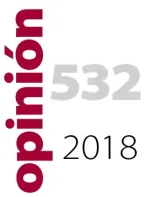The Troubling Transformation of the EU

A longer version of this article was published in the February 2018 issue of Política Exterior
There is currently much discussion of proposals to deepen integration of the eurozone by creating a eurozone finance minister and budget and turning the European Stability Mechanism (ESM) into a European Monetary Fund, which were originally put forward by French president Emmanuel Macron. For Macron, they were part of a vision for a “Europe qui protege” in which there would be greater “solidarity” between citizens and member states. But many in Germany, including former German finance minister Wolfgang Schäuble, see the proposals as a way to increase control over EU member states’ budgets and more strictly enforce the eurozone’s fiscal rules. The proposals, if enacted along these lines, could be a further step in a troubling transformation of the European Union that goes back to the beginning of the euro crisis.
Central to the transformation of the EU that seems to be taking place is the use of conditionality. Conditionality was originally used in the context of the accession process – “external conditionality”. EU member states that wanted to join the euro were also subject to conditionality through the terms of the Maastricht Treaty and the Stability and Growth Pact. After the euro crisis began, “internal conditionality” on eurozone countries was tightened under “Maastricht III”. However, it still seemed softer than “external conditionality” because threats against EU member states lacked credibility. But that changed with the threat to eject Greece from the euro in July 2015.
This increased use of “internal conditionality” has transformed the meaning of “solidarity” within the EU. During the euro crisis, debtor countries demanded “solidarity” and felt they did not receive it because of the resistance by creditor countries to further debt mutualisation. Meanwhile, creditor countries felt they had shown “solidarity” by agreeing to bailouts. The truth is somewhere in the middle: there has been a kind of “solidarity” in the eurozone since the crisis began, but it is the kind of “solidarity” that the International Monetary Fund (IMF) shows – that is, loans in exchange for structural reform (or “structural adjustment” in IMF terms). This is not how “solidarity” was previously understood in the EU.
It is as if the EU is in the process of being remade in the image of the IMF. It increasingly seems to be a vehicle for imposing market discipline on member states – something quite different from the project that the founding fathers had in mind and also quite different from how most “pro-Europeans” continue to imagine the EU. Indeed, it is striking that, in discussions about debt relief for crisis countries, the European Commission has often been even more unyielding than the IMF. As Luigi Zingales put it in July 2015: “If Europe is nothing but a bad version of the IMF, what is left of the European integration project?” The transformation of the ESM into a European Monetary Fund may be the final, logical step in this process of remaking the EU in the image of the IMF.
The figure, who more than anyone else embodies this transformation of the EU – and has done more than anyone else to make the case for it, is Angela Merkel. She has spoken endlessly of making Europe “competitive” – that is, able to compete economically, and perhaps also geopolitically, with other regions in the world. But in the process of becoming more “competitive”, another subtle transformation is taking place. “Pro-Europeans” once thought of the EU as a kind of model for the rest of the world. Led by Merkel, they are now abandoning this idea and increasingly thinking of the EU as a competitor. Supporters of this approach will say that in order to be a model, the EU needs to be “competitive”. But in order to become “competitive”, the EU may be hollowing out the model for which it once stood.
In particular, Merkel clearly believes that, in order to be “competitive”, Europe needs to cut back on the generous welfare state for which it is known. She likes to say that Europe has 7 percent of the world’s population, 25 percent of its GDP and 50 percent of its social spending in order to suggest that “it cannot continue to be so generous”. This logic is behind the imposition of austerity on “crisis countries”. For example, former Greek finance minister Yannis Varoufakis says that, in their first meeting, Schäuble told him that “the ‘overgenerous’ European social model was no longer sustainable and had to be ditched” in order to make Europe “competitive”. This “competitive” Europe bears little resemblance to the one of the “pro-European” imagination with its emphasis on the “social market economy”.
Perhaps the most striking – and disturbing – image for the new EU that seems to be emerging comes from Mark Leonard’s book, Why Europe Will Run the 21st Century. In it, he evoked the Panopticon – the circular prison designed by Jeremy Bentham – as a metaphor for the EU. In Surveiller et Punir, Michel Foucault saw the Panopticon as emblematic of a modern form of discipline that aimed to create “docile bodies”. Leonard intended to apply Foucault’s analysis to the EU in a positive sense – the idea was to illustrate how the EU used power in such an efficient way that rules ultimately become internalised. But the idea of the EU as Panopticon may turn out to have been prescient in a somewhat darker sense. What seems now to be emerging is not so much a “Europe qui protege” as a “Europe qui surveille et punit”.
Keyword: Eurozone, EU, Macron, Merkel
E-ISSN: 2013-4428
D.L.: B-8439-2012